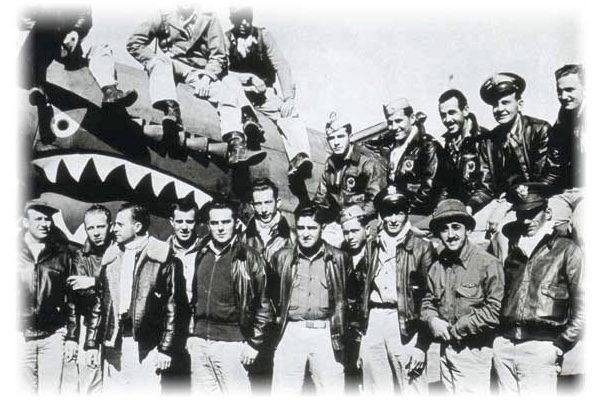WWII’s Flying Tigers Run Out of Fuel

Damon Chua’s play Incident at Hidden Temple opens with a woman stabbing an American GI to death near a railroad in China and shoving his body under a tarpaulin. The murder is slow and dreary and done in really bad lighting. It sets the tone for the rest of the play, a 1943 story of the Flying Tigers, a unit of volunteer American pilots who flew for the Nationalist Chinese military forces in World War II.
In the story, a woman journalist’s sister disappears after the pair meets a suspicious soldier who later says he never met them and has a different name. The girl was lost near a hidden temple that some people can see and some cannot. The older sister tries to find her when she arrives at an air corps base. The air corps is trying to find the killer of the soldier near the railroad and I, in row C, am trying to find the plot of the play.
The play is produced by the Pan Asian Theater, one of New York’s top theater companies, but this story about the Flying Tigers runs out of fuel. The drama about the airmen, that just opened at the Clurman Theater on Theater Row, W. 42d Street, in New York, needs to gain higher altitude.
The first act of Incident at Hidden Temple starts off incredibly slowly. It is far too wordy. The set is pretty stark, the lighting problematic and the action sparse. It pace of the story does pick up in the second act, but that is not enough to save the play.
Chua tries to tell too many stories in the play. He narrates the tale of the two girls. Then he plunges into the tale of the sister who is a journalist/girlfriend to a U.S. general and interviewer of Chiang Kai-Shek and, at the end of the lay, becomes an historian extraordinaire. There is the story of the conflicted U.S. General, brassy Chiang, a blind man who has a lot of secrets, the woman who committed the murder, feminism in Chinese military forces and even Ernest Hemingway. Yes, Earnest Hemingway, the Old Man and the Sea himself, out and about in the mountains of China.
The ending is a real surprise, too. The whole story goes one day, but the end goes another.
All of this is unfortunate because the Flying Tigers were not only a fascinating part of World War II’s story, but a piece of history of which most Americans know little about. About 300 volunteer U.S. military flyers were in the Tigers, grouped into three squadrons under the command of Claire Lee Chennault. All of the aircraft had ominous, colorful shark-faced noses. The men were listed as members of the Chinese Air Force but were technically U.S. personnel who flew for salaries of about $750 a month, triple U.S. air corps pay. They were actually mustered into the Chinese air force in 1940, before the U.S. became involved in the war and were authorized by President Roosevelt. They were hailed as heroes by many and seen as mercenaries by others.
They flew their first engagement against Japan on December 20, 1941. The Tigers was an extraordinarily successful group. They flew for a total of seven months and shot down 296 Japanese aircraft, losing only 14 pilots in the process. They were disbanded and merged into a new U.S. air corps group in July, 1942. Their heroism inspired Americans during a bleak early period of the war in Asia and in the Pacific. Since then, the Tigers have achieved near mythical status in Hollywood movies and television shows.
There was talk of the political role of Americans fighting for the Chinese Nationalists and the animosity between the nationalists and the communists, but it was murky. The play should have told audience a lot more than it did about the Flying Tigers, and the political as well as military problems they encountered.
The acting in Incident at Hidden Temple show is pretty good, as is the direction by Kaipo Schwab. He gets fine work from Nick Jordan as O’Grady and McAllister, Rosanne Ma as Jing, Dinh James Doan as the blind man and also General Chiang Kai-Shek, Tim Liu as the suspicious pilot Walter Hu, Ying Ying Li as Ava Chao, the journalist, Briana Sakamoto as Lucy Chao, the sister, and Jonathan Miles as General Van Holt.
The unwieldy script shoots down the work of everyone, though.
The Pan Asian Theater Company is one of New York’s best, but their story about the Flying Tigers never gets off the runway.
PRODUCTION: The play is produced by the Pan Asian Theater Company, Sets: Sheryl Liu, Costumes: Hanhji Jang, Lighting: Pamela Kupper, Sound. Ian Wehrle. It is directed by Kaipo Schwab. The play runs through February 12.